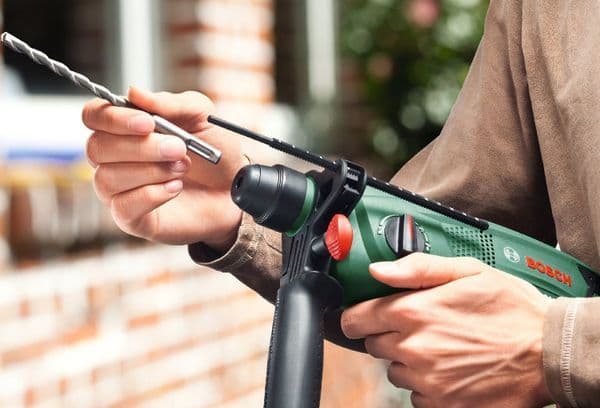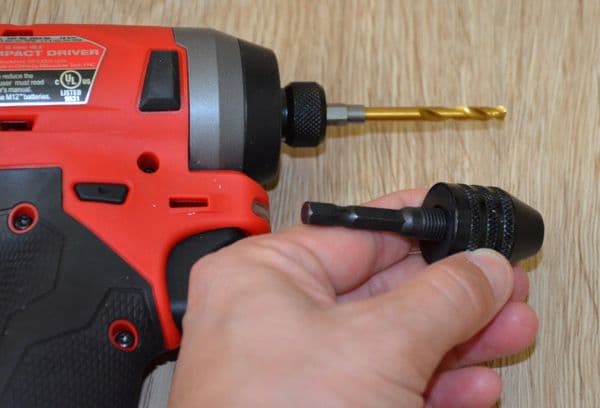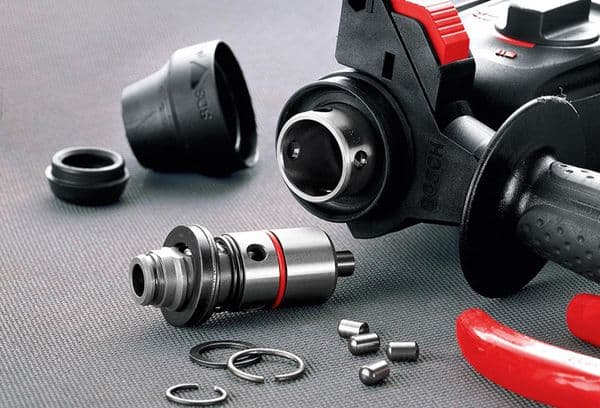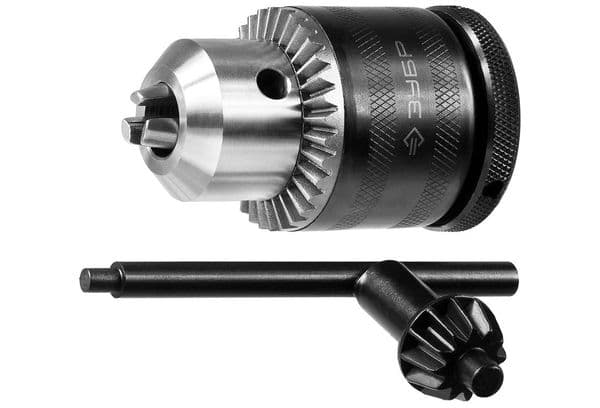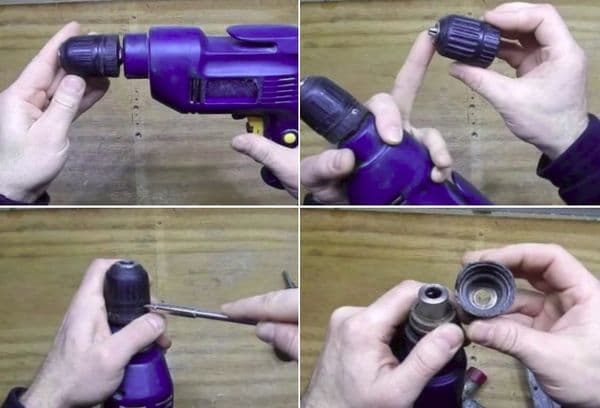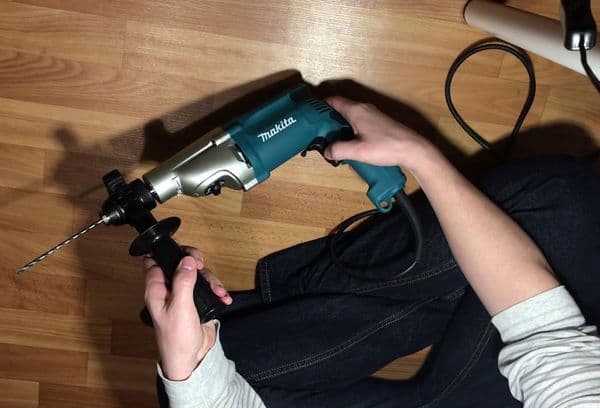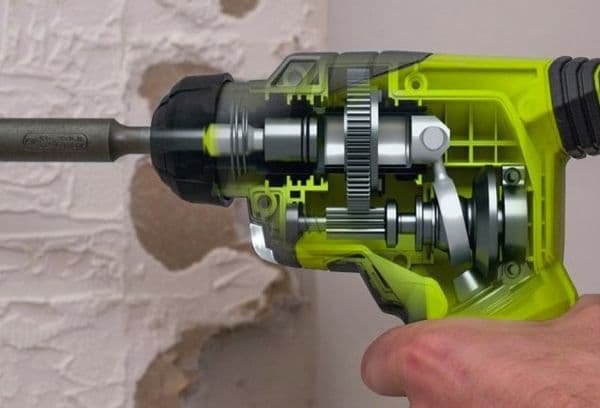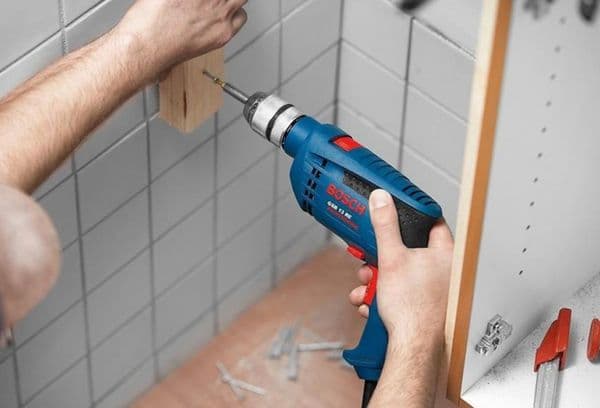How to remove a stuck drill from a drill, hammer or wall
Content:
Malfunctions with the tool happen both for amateurs and professionals. A drill or drill stuck in a chuck or wall is usually removed with improvised means. It is more difficult to remove the chip remaining in the tool. Which way to choose depends on the reason the drill bit is jammed, as well as on the tools that are available.
Reasons: why the drill got up
Experts call three main reasons why a drill cannot be removed from a drill (regardless of the type of chuck):
- Tooling diameter too large. In the process, too large a drill is rubbed in and stuck like a dowel.
- Mild steel and, as a result, deformation (most often, the tail wedges, like an anchor) of a drill or a drill. For the same reason, the tool breaks, especially in perforators and percussion drills.
- Discrepancy between shank and chuck mechanism. This often leads to the fact that the equipment falls apart, and part remains in the cartridge, but it also happens that the drill / drill simply gets stuck.
Another, less common cause is rust. People who are often involved in repairs do not usually encounter this, but if a drill / puncher with equipment dusts for a long time on a balcony, in a shed, a country house, an unheated house, a garage, etc., the tool is corroded. In this case, the masters say that the sting is “soured”.
How to save a key cam cartridge
If the reason is only slight corrosion or a deformed drill, you will need a gas wrench, a chisel or a screwdriver and a 700 g hammer:
- Spray rust converter, grease or engine / any mineral oil into the cartridge.
- Allow to stand for 5-20 minutes.
- Hold the chuck with a gas or plumbing wrench so that the drill is on your left hand.
- Fix the structure with a vise, clamp or just legs.
- Place a screwdriver on the clamping ring, in the groove between the teeth, tilting away from you.
- It is calculated to strike the handle of the screwdriver with a hammer, forcing the ring to turn.
If you have two gas keys, you can try to turn both rings in different directions at the same time.
Tip
Be sure to inspect the cartridge: whether there are any grooves, dents or other defects on it and inside it. If so, it is better to change the nozzle. Open the cartridge as much as possible and loosen the screw at the bottom to remove the nozzle.
How to release a double-coupling cartridge
Unlike the key, this type of cartridge has no serration and, accordingly, emphasis. Its rings are relatively smooth. In this case, the ideal solution is the removable holder "store", which often comes complete with modern drills. You will also need a hammer:
- Hold the upper coupling closest to the drill (ring) with the holder and secure it as securely as possible.
- Clamp the drill with a vise, clamp, in the hands or between the knees.
- Forcefully hit the handle of the “magazine” in the direction in which the upper clutch normally spins.
One hit is enough - the ring moves, and the drill is quite easily released. To facilitate sliding, it is permissible to drip between the cams of the cartridge or under the coupling a little oil or grease.
How to help a keyless chuck
Screwdrivers, drills, and punchers usually have quick-clamping chucks. They have no rotating clutch, the snap ring retainer holds the snap. Home craftsmen offer two ways to free a drill or drill:
- Remove the upper sealing ring, pull the cartridge down, pry off the clamp ears with a wire and a screwdriver, stretch it and also lift it up. After that, grab the equipment with narrow pliers or pliers and, swinging or turning, pull it out.
- To remove the raster (the tube leading to the cartridge) - this is necessary so that the end of the drill becomes accessible. Drill a tip with a conventional drill and drill for metal (cobalt or with diamond spraying). After that, the drill will easily come out of the cartridge. This method is almost the only one for punchers and percussion drills, which literally flattened, riveted the end of the drill.
How to get a broken end of a drill from a chuck
When a drill, a drill or other equipment with an unformatted tip (for example, SDS instead of a hexagon) is driven into a chuck, under heavy load and especially if the steel is of poor quality, the sting breaks. This happens especially often with perforators - the equipment falls apart where the balls catch it.
Removing such a chip is extremely difficult. Awl, screwdriver, magnet with superglue show low efficiency. A more risky way is to supplement the awl with a plentiful portion of oil.
The author of the magazine purityis.decorexpro.com/en/ got acquainted with different opinions on the forums, and came to the conclusion that the safest option is to go to the workshop, where the cartridge will either be dismantled or replaced.
Without disassembling the punch and cartridge, the chip can be removed in two effective (but unsafe) ways.
Welding machine:
- Hold the punch in a powerful vice with the chuck up.
- Remove the seal, stopper and other washer nuts, if necessary, or simply pull the cartridge down.
- In the cartridge maximally opened after this, lower the insulating sheath from the powerful wire (at least 7 mm in cross section).
- To fix one terminal of the welding machine on the case of the puncher.
- Use a second terminal to grab a long rod or sting for welding (the cross section is smaller than that of the insulating tube).
- Put the sting to the fragment in the cartridge and give a short discharge.
- Pull out the rod with the debris.
This is a very quick method if a friend or in their own tools has a welding machine. If not, it is unlikely that he will be able to pick up an analogue. Another drawback that was noted on the forums is welding spikes, which can randomly form both in the cartridge and in the perforator. Such bows subsequently disable the tool.
With a push:
- Remove the boot.
- Pull cartridge down.
- Turn on shock mode and simultaneously click on the chip with anything.
At the same time, a fragment of a drill shoots (and it is not known where it will hit). The method is quick, but it’s worthwhile to put something in front of the “barrel” of the puncher that will extinguish the impact of the “shell”, otherwise the rebound will easily cause injury or break anything around.
Drill / drill stuck in the wall - how to be
The forums and vlogs offer a ton of ways to extract a stuck drill. Once on a stone, it is usually possible to free the equipment by simply turning on the reverse. But most often the drill gets stuck, flying into a reinforcing bar of large cross section. It is jammed so that the tool does not cope and does not scroll it; pulling is also useless.
In order not to ruin the cartridge, it is better to free the nozzle and leave it “naked”. Next, proceed with the release attempts:
- If the drill is stuck in the ceiling, wrap a chain around it and hang a heavy load, raise it to the chest level and release it sharply (it is important to have time to bounce to the side so as not to get injured by the drill and / or load). The method is quite risky.
- Clamp the tip in a vice, attach the lever and pull, swinging and trying to crank. This method is best managed together.
The best option - having stumbled upon a reinforcement, do not try to take it offhand. Having met the obstacle, immediately remove the drill and pass the hole with a magnetic screwdriver. If chips remain on it, you have a case with fittings. Slightly tilt the rotary hammer to bypass the rod diagonally up or down. A slight slope will not weaken the anchor fixture, which is most often used in concrete.
Another option is to break through the reinforcement, but this is permissible only with thin rods, otherwise there is a high risk of getting a crack and weakening the concrete floor.
To drill fittings:
- Set aside the punch and take a drill with a drill for metal (high quality steel is important).
- Gradually drill the fittings first with a thinner (4 mm) sting, then large and finish with the 8th number.
Important
In no case do not try to break through the reinforcement with a concrete drill - ruin both the equipment and, possibly, the cartridge.
There are no hopeless situations if there is ingenuity and desire. Act confidently, but carefully, and the drill or drill comes out of the cartridge, and the repair continues without problems.
